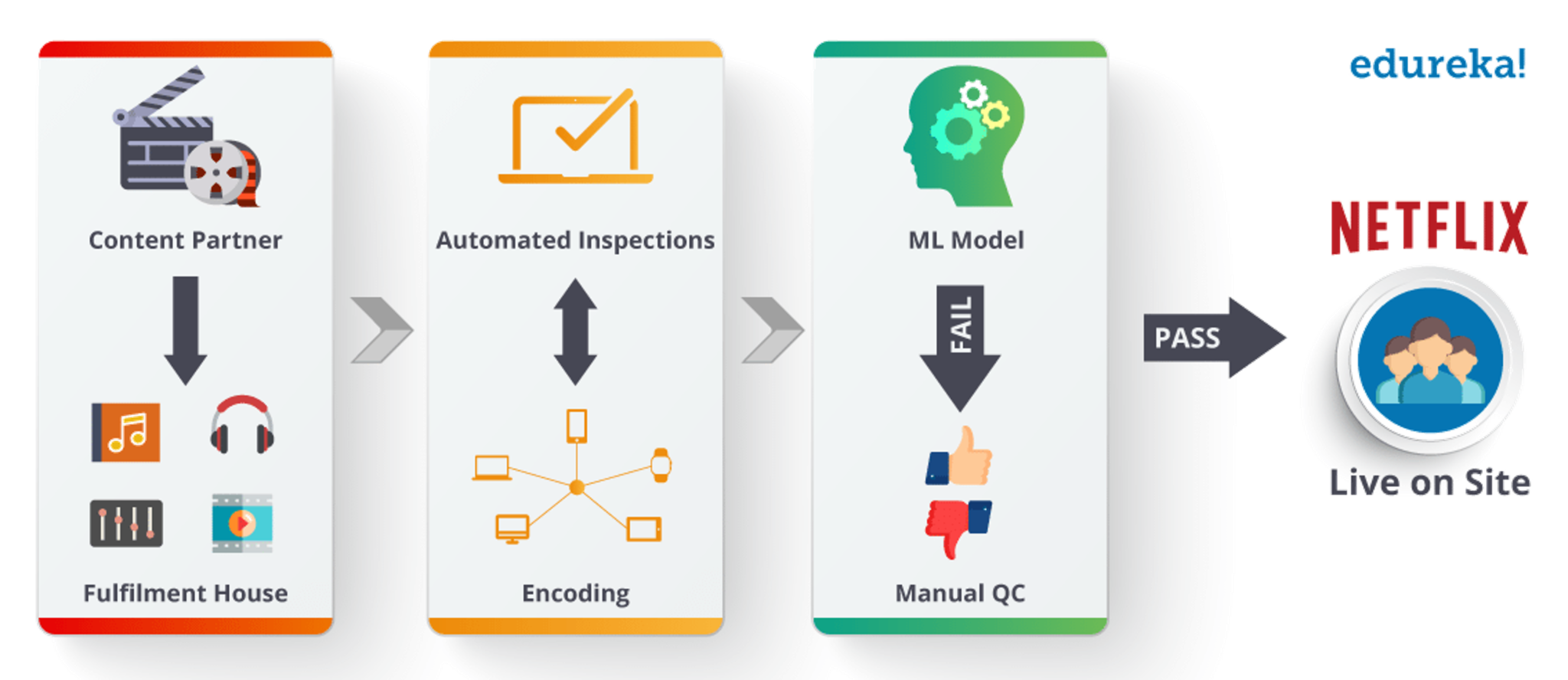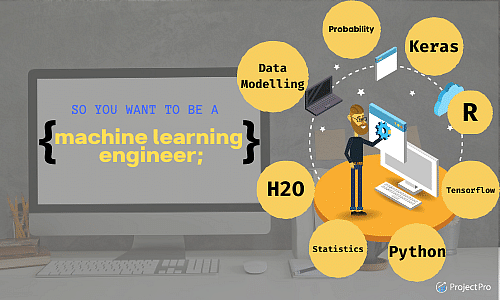All Categories
Featured
Table of Contents
- – Not known Details About Ai And Machine Learnin...
- – 10 Easy Facts About Top Machine Learning Caree...
- – The Ultimate Guide To 5 Best + Free Machine L...
- – Some Known Details About Master's Study Track...
- – Excitement About How To Become A Machine Lea...
- – All about Machine Learning Online Course - A...
You possibly know Santiago from his Twitter. On Twitter, daily, he shares a great deal of sensible features of device understanding. Many thanks, Santiago, for joining us today. Welcome. (2:39) Santiago: Thanks for inviting me. (3:16) Alexey: Before we go right into our major topic of moving from software design to artificial intelligence, perhaps we can start with your history.
I started as a software developer. I went to college, obtained a computer system scientific research degree, and I started constructing software application. I think it was 2015 when I chose to go for a Master's in computer system scientific research. Back then, I had no concept about artificial intelligence. I really did not have any interest in it.
I recognize you've been making use of the term "transitioning from software application engineering to artificial intelligence". I like the term "including in my ability the artificial intelligence abilities" much more since I think if you're a software designer, you are already supplying a great deal of worth. By including equipment understanding currently, you're enhancing the effect that you can carry the industry.
Alexey: This comes back to one of your tweets or possibly it was from your training course when you contrast 2 techniques to discovering. In this case, it was some trouble from Kaggle regarding this Titanic dataset, and you just learn just how to resolve this issue making use of a specific tool, like decision trees from SciKit Learn.
Not known Details About Ai And Machine Learning Courses
You initially discover mathematics, or linear algebra, calculus. When you know the mathematics, you go to device knowing theory and you discover the concept.
If I have an electric outlet below that I need changing, I do not wish to most likely to university, spend four years recognizing the math behind power and the physics and all of that, simply to change an electrical outlet. I would certainly rather start with the outlet and discover a YouTube video clip that aids me go via the problem.
Santiago: I truly like the concept of starting with a trouble, attempting to throw out what I understand up to that problem and understand why it does not work. Grab the tools that I require to resolve that problem and begin excavating much deeper and deeper and much deeper from that point on.
Alexey: Perhaps we can chat a little bit about finding out resources. You stated in Kaggle there is an introduction tutorial, where you can get and find out exactly how to make choice trees.
The only requirement for that course is that you recognize a little bit of Python. If you go to my profile, the tweet that's going to be on the top, the one that says "pinned tweet".
10 Easy Facts About Top Machine Learning Careers For 2025 Shown

Even if you're not a developer, you can begin with Python and function your means to even more artificial intelligence. This roadmap is focused on Coursera, which is a system that I really, truly like. You can examine every one of the training courses free of cost or you can spend for the Coursera subscription to obtain certifications if you intend to.
To ensure that's what I would do. Alexey: This returns to one of your tweets or maybe it was from your course when you contrast two techniques to learning. One technique is the trouble based technique, which you just chatted around. You discover a problem. In this situation, it was some problem from Kaggle regarding this Titanic dataset, and you just learn just how to resolve this trouble making use of a particular tool, like choice trees from SciKit Learn.

You first discover mathematics, or linear algebra, calculus. When you recognize the math, you go to machine learning theory and you learn the concept. Four years later on, you lastly come to applications, "Okay, how do I use all these four years of math to resolve this Titanic problem?" ? In the previous, you kind of save on your own some time, I believe.
If I have an electric outlet right here that I need replacing, I don't intend to most likely to college, invest four years understanding the math behind electrical energy and the physics and all of that, simply to change an outlet. I would certainly instead begin with the outlet and find a YouTube video that helps me experience the issue.
Santiago: I really like the concept of beginning with a trouble, attempting to toss out what I understand up to that trouble and comprehend why it does not function. Get hold of the devices that I require to fix that problem and begin excavating much deeper and deeper and much deeper from that factor on.
Alexey: Possibly we can speak a little bit about finding out resources. You pointed out in Kaggle there is an intro tutorial, where you can get and find out just how to make decision trees.
The Ultimate Guide To 5 Best + Free Machine Learning Engineering Courses [Mit
The only requirement for that training course is that you recognize a bit of Python. If you're a programmer, that's a terrific base. (38:48) Santiago: If you're not a programmer, after that I do have a pin on my Twitter account. If you go to my account, the tweet that's mosting likely to be on the top, the one that says "pinned tweet".
Also if you're not a developer, you can start with Python and work your method to more device discovering. This roadmap is concentrated on Coursera, which is a system that I actually, actually like. You can audit all of the courses free of charge or you can pay for the Coursera registration to obtain certificates if you wish to.
Some Known Details About Master's Study Tracks - Duke Electrical & Computer ...
Alexey: This comes back to one of your tweets or possibly it was from your course when you contrast 2 strategies to discovering. In this instance, it was some trouble from Kaggle regarding this Titanic dataset, and you just discover just how to fix this issue using a certain tool, like decision trees from SciKit Learn.

You initially find out mathematics, or linear algebra, calculus. When you understand the mathematics, you go to equipment understanding theory and you discover the concept.
If I have an electric outlet right here that I require changing, I don't wish to most likely to university, spend 4 years recognizing the mathematics behind electricity and the physics and all of that, simply to transform an electrical outlet. I prefer to begin with the outlet and find a YouTube video that assists me undergo the problem.
Bad analogy. However you understand, right? (27:22) Santiago: I truly like the concept of starting with a trouble, attempting to toss out what I understand up to that trouble and understand why it doesn't work. Order the devices that I require to address that problem and start excavating deeper and much deeper and much deeper from that factor on.
Alexey: Possibly we can talk a bit concerning finding out resources. You mentioned in Kaggle there is an intro tutorial, where you can get and find out how to make decision trees.
Excitement About How To Become A Machine Learning Engineer (With Skills)
The only requirement for that training course is that you know a little bit of Python. If you go to my profile, the tweet that's going to be on the top, the one that claims "pinned tweet".
Also if you're not a programmer, you can start with Python and work your means to even more equipment knowing. This roadmap is concentrated on Coursera, which is a platform that I truly, actually like. You can audit every one of the courses free of cost or you can pay for the Coursera subscription to obtain certificates if you wish to.
So that's what I would certainly do. Alexey: This comes back to one of your tweets or maybe it was from your course when you contrast two techniques to knowing. One technique is the problem based technique, which you simply spoke about. You find an issue. In this case, it was some issue from Kaggle concerning this Titanic dataset, and you simply learn how to resolve this problem utilizing a specific device, like choice trees from SciKit Learn.
You initially learn math, or linear algebra, calculus. Then when you know the math, you most likely to artificial intelligence concept and you find out the concept. After that 4 years later, you lastly come to applications, "Okay, exactly how do I utilize all these 4 years of mathematics to fix this Titanic problem?" Right? In the previous, you kind of conserve yourself some time, I believe.
All about Machine Learning Online Course - Applied Machine Learning
If I have an electric outlet below that I require changing, I do not intend to most likely to university, invest 4 years understanding the math behind electricity and the physics and all of that, simply to change an outlet. I would instead start with the outlet and discover a YouTube video clip that aids me experience the problem.
Santiago: I actually like the concept of beginning with a problem, attempting to toss out what I recognize up to that problem and comprehend why it doesn't function. Get hold of the devices that I need to resolve that issue and begin excavating deeper and much deeper and deeper from that factor on.

That's what I typically recommend. Alexey: Maybe we can speak a bit concerning discovering resources. You pointed out in Kaggle there is an introduction tutorial, where you can get and discover how to choose trees. At the beginning, prior to we started this interview, you pointed out a couple of books also.
The only demand for that training course is that you recognize a bit of Python. If you're a programmer, that's a wonderful base. (38:48) Santiago: If you're not a developer, then I do have a pin on my Twitter account. If you go to my profile, the tweet that's going to be on the top, the one that claims "pinned tweet".
Even if you're not a designer, you can start with Python and function your way to more device understanding. This roadmap is concentrated on Coursera, which is a platform that I truly, actually like. You can investigate all of the courses free of charge or you can pay for the Coursera subscription to get certifications if you wish to.
Table of Contents
- – Not known Details About Ai And Machine Learnin...
- – 10 Easy Facts About Top Machine Learning Caree...
- – The Ultimate Guide To 5 Best + Free Machine L...
- – Some Known Details About Master's Study Track...
- – Excitement About How To Become A Machine Lea...
- – All about Machine Learning Online Course - A...
Latest Posts
How To Master Leetcode For Software Engineer Interviews
Mastering Data Structures & Algorithms For Software Engineering Interviews
How To Optimize Your Resume For Faang Software Engineering Jobs
More
Latest Posts
How To Master Leetcode For Software Engineer Interviews
Mastering Data Structures & Algorithms For Software Engineering Interviews
How To Optimize Your Resume For Faang Software Engineering Jobs